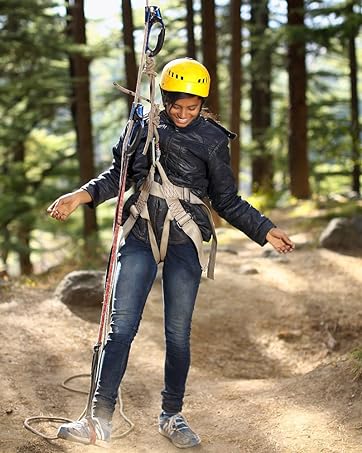Cointeaching Outdoor product specialty store, safeguarding your safety.

Ensuring Your Climbing Adventures are Safe
Rock climbing is an exhilarating and adventurous sport, but safety always comes first. Whether you’re a beginner or an experienced climber, understanding and adhering to safety protocols are crucial. Here are key safety tips to help protect yourself and others during your climbing journeys.
1. Familiarize Yourself with Your Equipment
Choose Appropriate Gear
Ensure your climbing equipment is of high quality and meets international standards. Essential gear includes climbing ropes, harnesses, helmets, carabiners, and quickdraws. Avoid compromising on quality to save costs, as subpar gear may pose safety risks.
Proper Use and Maintenance
Learn how to correctly wear and use each piece of equipment. Ensure harnesses fit snugly and helmets are securely fastened. Regularly inspect and maintain gear for signs of wear or damage, replacing any compromised equipment promptly.
2. Understand Your Climbing Environment
Indoor Climbing
At indoor climbing gyms, adhere to all safety rules and operational guidelines. Take time to familiarize yourself with the facility layout and equipment, and always follow instructor guidance. Avoid attempting high-difficulty routes or using complex equipment without proper authorization.
Outdoor Climbing
Before outdoor climbs, research weather conditions, terrain, and difficulty levels of your chosen routes. Refrain from climbing in severe weather conditions such as thunderstorms, strong winds, or extreme temperatures. Familiarize yourself with climbing routes and emergency evacuation procedures.
3. Enhance Physical Fitness and Technique
Physical Training
Building strong physical fitness is fundamental to safe climbing. Focus on strengthening your arms, legs, and core muscles through targeted exercises. Additionally, improve cardiovascular endurance through activities like running or swimming to enhance overall stamina.
Climbing Techniques
Participate in professional climbing courses to learn proper climbing techniques and safety practices. Master basic knot tying, belaying techniques, and rappelling skills through consistent practice to boost confidence and proficiency.
4. Mental Preparedness and Safety Awareness
Maintain Calm and Focus
Remain calm and focused during climbs to avoid haste and overexertion. Set realistic climbing goals and progressively challenge yourself to improve skills. Develop a positive and optimistic mindset when facing difficulties.
Stay Vigilant
Maintain awareness of your surroundings and communicate effectively with climbing partners. Follow the “buddy check” principle before each climb to ensure equipment and knots are secure and correctly positioned.
5. Emergency Preparedness and First Aid Skills
Carry an Emergency Kit
Always carry a basic first aid kit containing essentials such as bandages, disinfectants, tourniquets, and adhesive bandages. This ensures immediate assistance in case of minor injuries or emergencies.
Learn First Aid Skills
Acquire basic first aid skills including CPR, wound care, and fracture management. Rapid and appropriate first aid response in emergencies can potentially save lives.
Conclusion
Rock climbing offers exhilarating challenges and rewarding experiences, but safety should never be compromised. By understanding and using equipment correctly, familiarizing yourself with climbing environments, improving physical fitness and technique, maintaining mental preparedness and safety awareness, and acquiring emergency preparedness and first aid skills, you can minimize risks and ensure each climbing adventure is safe and enjoyable. Embrace the thrill of climbing while safeguarding yourself and others, creating lasting memories and achievements along the way.
